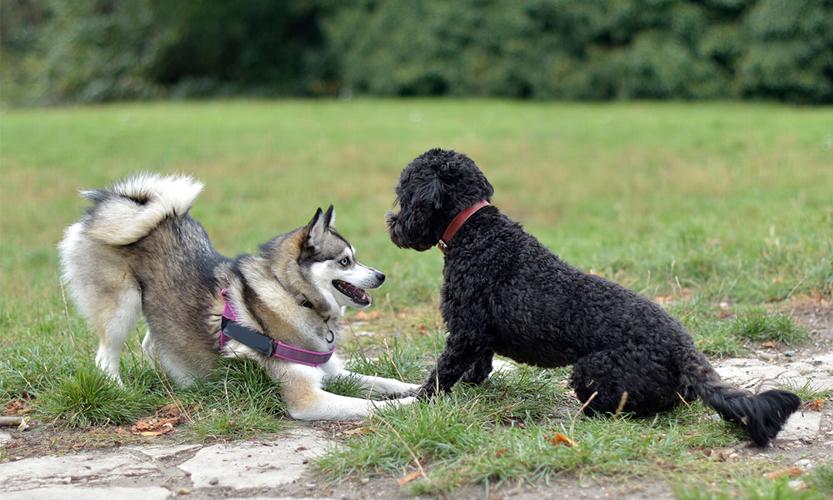A Key to Effective Training
Understanding your dog's body language is fundamental to effective training. Dogs communicate primarily through their body language, and being able to read these signals can improve training as a whole. In this article, we'll explore the nuances of dog body language and how this understanding can be used to train your dog more effectively.
Why Understanding Dog Body Language is Important
Dogs cannot speak our language, but they have their own sophisticated way of communicating through posture, facial expressions, and movements.
By learning to interpret these signals, you can:
- Enhance Communication: Better understand what your dog is trying to convey.
- Prevent Behavioural Issues: Recognise signs of stress, fear, or aggression early on.
- Improve Training Outcomes: Tailor your training methods to your dog's emotional state and responsiveness.
- Strengthen Bond: Build a deeper, more trusting relationship with your dog.
Key Elements of Dog Body Language
Ears
- Forward: Alert, interested, or curious.
- Flattened: Fearful or submissive.
- Relaxed: Content and comfortable.
Eyes
- Soft, Blinking: Relaxed and happy.
- Wide, Staring: Alert or feeling threatened.
- Avoiding Eye Contact: Submissive or anxious.
Mouth
- Relaxed, Slightly Open: Happy and relaxed.
- Panting (when not hot): Stress or anxiety.
- Lip Licking/Yawning: Signs of discomfort or calming signals.
Tail
- Low and Wagging Slowly: Uncertainty or caution.
- Tucked Between Legs: Fear or submission.
- Held High and Stiff: Alertness or potential aggression.
Body Posture
- Relaxed and Loose: Comfortable and content.
- Stiff and Rigid: Stress, fear, or aggression.
- Crouching Low: Submission or fear.
Applying Body Language to Training
Recognise Readiness to Learn
Look for signs of relaxation and engagement. A dog that is attentive and showing relaxed body language is ready to learn and more likely to respond positively to training.
Adjust Training Techniques
If your dog shows signs of stress or anxiety (e.g., panting, lip licking, yawning), it may be best to pause and give them a break. Pushing a stressed dog can lead to negative associations with training.
Use Positive Reinforcement
Reward desired behaviours with treats, praise, and affection when your dog is showing positive body language. This helps reinforce good behaviour and builds a positive association with training.
Timing and Patience
Pay attention to your dog's signals to gauge the right time for training sessions. Keep sessions short and positive to prevent overexertion and maintain their interest.
Building a Strong Bond
Understanding your dog's body language isn't just about training; it's also about building a strong, trusting relationship. When your dog feels understood and respected, they are more likely to be cooperative and eager to learn. This bond is the foundation of all successful training endeavours.
Final Thoughts
Interpreting your dog's body language is a skill that takes time and practice, but the rewards are immense. By tuning into your dog's non-verbal cues, you can enhance communication, prevent issues, and make training a more enjoyable experience for both you and your dog.
If you're ready to improve your dog's general training, contact us at 01322842483 or Support@janbdogtraining.com to schedule a consultation. Let's work together to build a well-behaved, happy, and confident dog!
